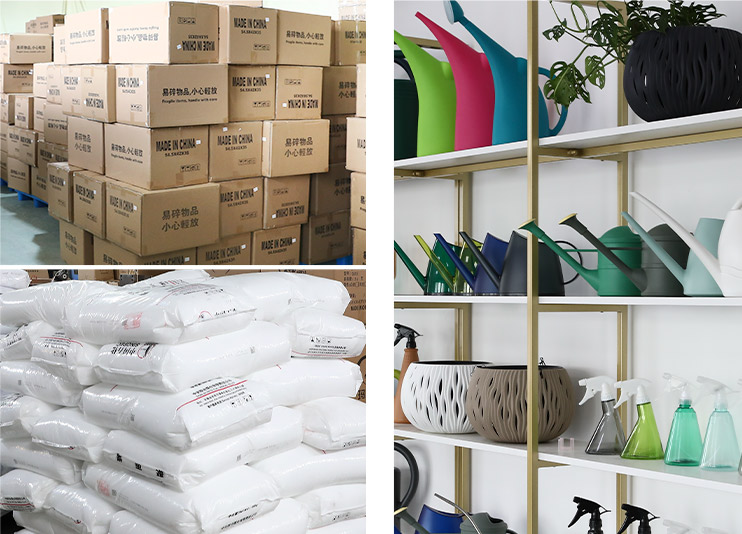What is a flower pot?
A flower pot is a container made of various materials such as clay, ceramic, plastic, or metal, that is used to hold soil and plants. Flower pots come in different shapes and sizes, and they may have drainage holes at the bottom to allow excess water to drain out. Flower pots are commonly used for growing plants such as flowers, herbs, vegetables, and small trees, both indoors and outdoors. They can also be used for decorative purposes, as the plants they contain can add color and life to a space.
Application of flower pot
The application of flower pots is primarily for growing plants, both indoors and outdoors. Some specific applications of flower pots include:
1. Decoration: Flower pots are often used as decorative elements in homes, offices, and public spaces. They can be used to add color and life to a space and to create a natural ambiance.
2. Horticulture: Flower pots are used in horticulture to grow plants such as flowers, herbs, vegetables, and small trees. They can be used to grow plants that would not otherwise grow in a particular environment.
3. Landscaping: Flower pots are often used in landscaping to create beautiful arrangements of plants. They can be used to add height and depth to a garden, as well as to create focal points.
4. Education: Flower pots can be used in schools and educational settings to teach children about plants and how to care for them. They can also be used for experiments and scientific research.
5. Food production: Flower pots can be used for growing edible plants such as vegetables, fruits, and herbs, which can be used for cooking and nutrition.
Overall, flower pots have a wide range of applications and are useful in many different settings.
How to choose a flower pot?
Choosing the right flower pot can be an important factor in the success of your plants. Here are some factors to consider when choosing a flower pot:
1. Size: Choose a flower pot that is appropriate for the size of your plant. A pot that is too small can restrict the growth of the plant, while a pot that is too large can cause the soil to retain too much moisture, which can lead to root rot. As a general rule, choose a pot that is 1-2 inches larger than the diameter of the plant's root ball.
2. Material: Flower pots are made from a variety of materials, including clay, ceramic, plastic, metal, and wood. Each material has its own advantages and disadvantages, so consider factors such as durability, insulation, weight, and aesthetics when choosing a material.
3. Drainage: Make sure the flower pot has adequate drainage holes to allow excess water to drain out. This helps prevent waterlogging, which can lead to root rot.
4. Style and aesthetics: Flower pots come in a variety of styles and colors, so choose one that complements the style of your home or garden. Also consider the color of the pot, as darker colors can absorb more heat, which can affect the temperature of the soil.
5. Location: Consider where the flower pot will be placed, as this can affect the size, material, and style of the pot. For example, a lightweight plastic pot may be better suited for a balcony or rooftop garden, while a heavy ceramic pot may be more appropriate for a garden on the ground.
By considering these factors, you can choose a flower pot that will provide the best growing conditions for your plants and also add beauty to your space.

 英语
英语 中文简体
中文简体
 CN
CN
.jpg?imageView2/2/w/500/h/500/format/jpg/q/100)



